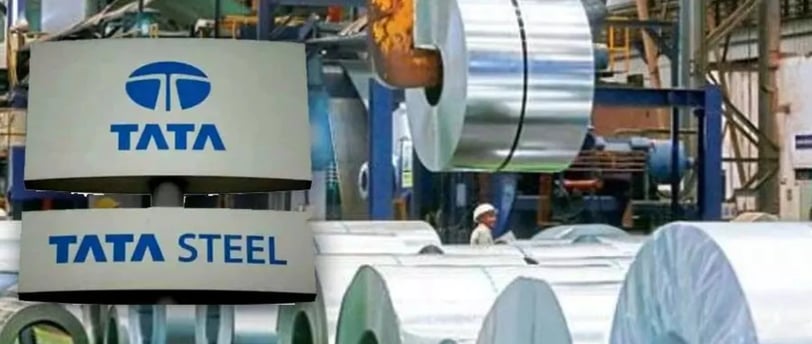Add your promotional text...
Tata Steel Share Price Analysis: A Tug of War Between Chartists and Analysts
Synopsis Tata Steel's share price has been a subject of intense debate among market experts. While some analysts predict a rebound to ₹150, others remain cautious due to challenges in the European market. With a 30% correction from its peak and support at the 200-week moving average, is this the right time to invest? Let’s dive deep into the factors shaping Tata Steel’s stock trajectory.
ANALYSIS AND OPINION
By Vikas Purohit
1/30/20252 min read


Tata Steel: A Market Rollercoaster
Tata Steel, a key player in the metal sector, has been experiencing significant fluctuations in its share price. With a 52-week range of ₹184.60 - ₹122.60, investors have seen both highs and lows. Recently, the stock closed at ₹131 on NSE, registering a nearly 2% gain. Despite this, experts remain divided on its future potential.
The Bullish Perspective: Chartists Eye ₹150
According to Dhwani Patel, Founder of Finversify, Tata Steel’s stock has corrected over 30% from its peak since June 2024. However, technical indicators suggest a possible rebound:
200-Week Moving Average Support: The stock is holding strong at this critical technical level, which often acts as a launching pad for recovery.
Short-Term Target of ₹150: If Tata Steel manages a closing above ₹135, it could see an upward movement towards ₹150.
Positive Domestic Outlook: The company’s India business remains stable, with lower costs and efficiency gains boosting profitability.
The Bearish Perspective: CLSA’s Downgrade
Despite the optimism from chartists, brokerage firm CLSA has adopted a more cautious stance:
Downgrade to HOLD: While previously rated as "Underperform," the stock has now been upgraded to "Hold," signaling balanced risk and reward.
Challenges in European Market: Tata Steel’s Europe operations remain a concern due to declining demand and cost pressures.
Dependence on Government Policies: The company’s performance may be influenced by potential import duties and regional demand shifts.
Financial Performance: A Mixed Bag
Q3 Profit Decline: Tata Steel’s profit after tax (PAT) dropped by 43% in Q3, raising concerns among investors.
Debt Reduction: Despite the fall in profits, the company’s efforts to reduce debt have been well received.
Sector-Wide Trends: While nonferrous metal companies have performed better, ferrous metal stocks like Tata Steel have faced increased cost pressures and competition from Chinese imports.
Long-Term Performance: Should You Invest?
Looking at historical performance, Tata Steel has had a volatile yet rewarding run:
1-Year Return: Flat
2-Year Return: 8%
3-Year Return: 20%
5-Year Return: 190% (Multibagger Performance)
Given these numbers, long-term investors have seen significant returns, but recent volatility suggests caution for short-term traders.
Final Verdict: A Stock at Crossroads
Tata Steel presents a classic case of divergence between technical analysis and fundamental concerns. On one hand, technical indicators suggest a potential rebound to ₹150, while on the other, global headwinds and a challenging European business raise red flags.
What Should Investors Do?
Short-Term Traders: Monitor the ₹135 level closely. A breakout could signal an uptrend.
Long-Term Investors: Assess risk tolerance. If you believe in Tata Steel’s fundamentals and India's steel demand growth, this could be a good accumulation zone.
New Investors: Wait for further clarity on global steel demand and Tata Steel’s Q4 results before making a move.
Disclaimer: This article is for informational purposes only and should not be considered investment advice. Consult a financial advisor before making any investment decisions.
